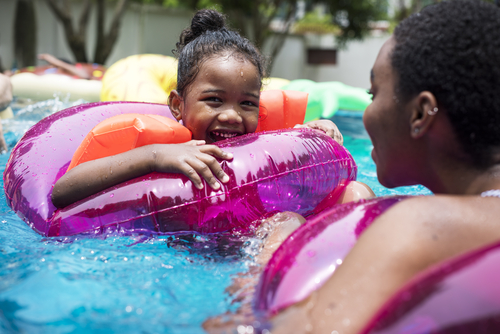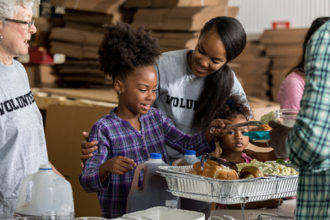Millions of us celebrate (and try to escape) the warm summer weather by taking a dip in a swimming pool. It’s such an iconic family activity, but tragically, over 200 young children drown in backyard swimming pools each year—did you know that drowning is the number one accidental killer of children between one and four years old? Or that it’s the number two killer of kids under 18 nationwide? You’re not alone. Most families don’t know these statistics, but they perfectly illustrate why we should make pool safety a priority.
Drowning happens quickly and silently. Parents expect to hear their child drowning, but unlike in the movies, drowning happens in complete silence. It can be all too easy to be caught unaware. For example, you may not have considered that your doggy door might be a hidden danger, but several children drown each year after escaping from the house through the doggy door. Make sure to secure it until they are too big to fit through. Another hidden danger is pool parties. In these scenarios, everyone thinks someone else is watching, and children are more likely to drown. The best thing to tell children is that they should never swim alone and to always make sure an adult is present and actively watching over them whenever they are near a body of water.
There are other steps you can take to keep your child safe, too. The Consumer Product Safety Commission, the National Drowning Prevention Alliance and Life Saver Pool Fence Systems recommend multiple layers of protection to create as close to a fail-safe system as possible.
Those 5.5 layers of pool safety protection include
- Parent supervision. There’s just no substitute for your keen eyes.
- High locks and alarms on all the doors and windows that lead to the pool.
- A pool safety fence that creates a barrier separating the home from the pool, isolating the pool. This fence should be at least 4′ high and have a self-closing self-latching gate.
- An alarm inside the pool that goes off if there is a disturbance in the water.
- Swim instruction for children. Babies can begin self-rescue training as early as 6 months old. And step 5.5 is CPR. If all else fails, knowing CPR could be the difference between a healthy outcome and a permanent tragedy.
Is your child heading to a pool party soon? Here are three questions you should ask.
- What safety measures does the pool have?
- Will there be designated water watchers assigned who will take turns supervising the pool for 15-minute shifts? If it’s a public pool, will there be a lifeguard on duty?
- Can I attend this event? If your child is going to some kind of event that involves a pool, if you can’t go with them, they shouldn’t go. No one is going to supervise your child as well as you do.
Eric Lupton is the President of Life Saver Pool Fence System, Inc. Eric lives with cerebral palsy, requiring him to use a power wheelchair. He’s a native of Boynton Beach, Fla. and loves Doctor Who, TED Talks and everything dairy.





